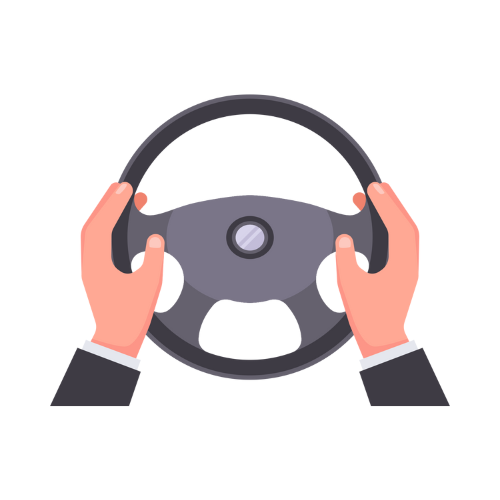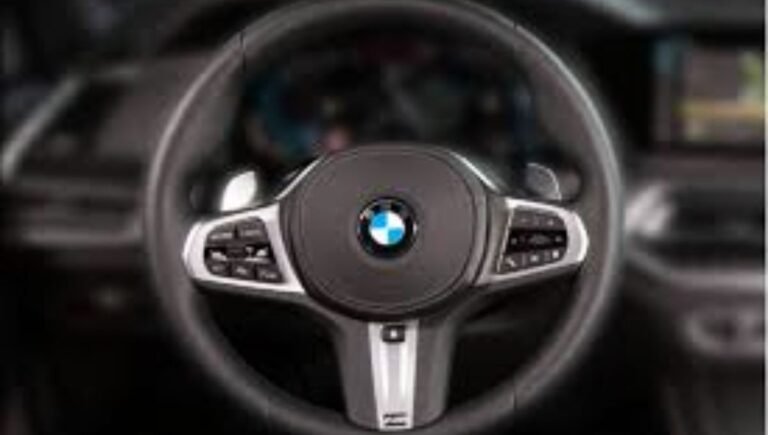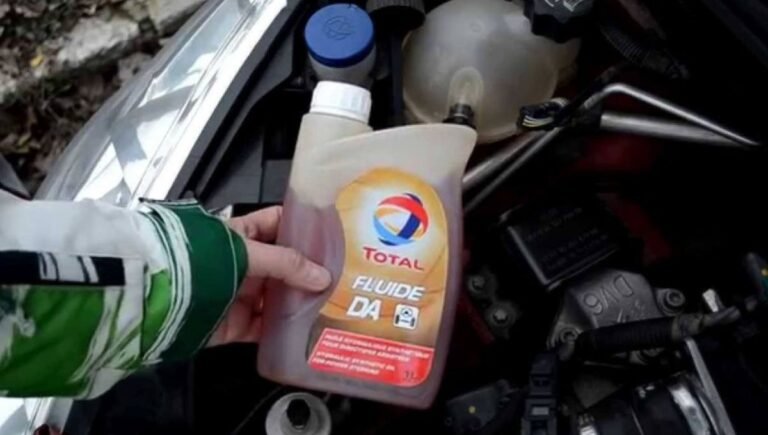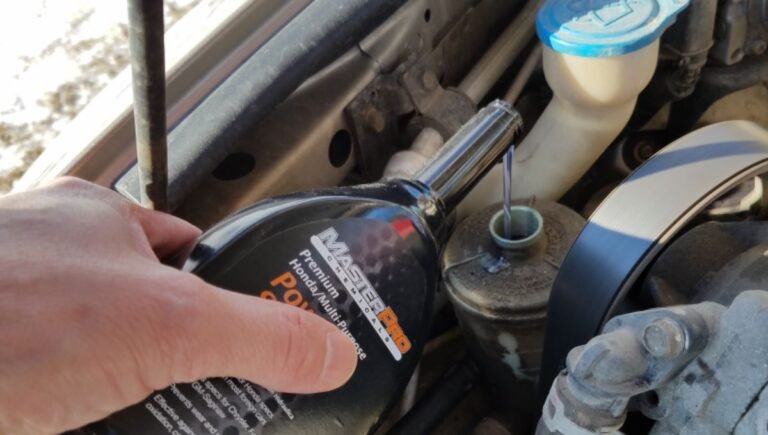How to Convert a Tiller Outboard Motor to Steering: Quick Guide

To convert a tiller outboard motor to steering, you will need to install a steering kit. This involves mounting a steering wheel and connecting it to the motor’s steering mechanism.
The process typically requires some mechanical skill and following the manufacturer’s instructions for proper installation. Are you tired of operating your tiller outboard motor manually and looking to upgrade to a steering system? Converting your motor to steering not only enhances control and maneuverability but also provides a more comfortable boating experience.
By installing a steering kit, you can easily navigate your boat with a steering wheel, making it more convenient and efficient on the water. In this guide, we will discuss the steps involved in converting a tiller outboard motor to steering, allowing you to enjoy smoother and more enjoyable boating adventures.
How to Convert a Tiller Outboard Motor to Steering: Quick Guide
The Basics Of Tiller Motors
Outboard motors with tiller steering are operated by a handle, allowing the operator to control the direction of the motor directly. These motors are commonly found on smaller boats and are known for their simplicity and ease of use.
Why Convert To Steering?
Converting a tiller outboard motor to steering offers several benefits. It provides a more comfortable and ergonomic driving experience, especially on larger vessels. Additionally, steering systems allow for better control and maneuverability, particularly in rough waters. This conversion also creates space on the boat and can enhance the overall appearance and functionality.
Tools And Materials Needed
When converting a tiller outboard motor to steering, having the right tools and materials is crucial. This ensures a smooth and successful conversion process. Below, you will find a list of essential tools and a materials checklist to guide you through the conversion.
Essential Tools For The Job
- Adjustable wrench
- Socket set
- Phillips and flathead screwdrivers
- Wire cutters/strippers
- Drill and drill bits
- Allen wrench set
- Grease gun
- Measuring tape
Materials Checklist
Before beginning the conversion, it’s essential to gather the necessary materials. Here’s a checklist to ensure you have everything needed:
| Item | Quantity |
|---|---|
| Steering helm | 1 |
| Steering cable | 1 |
| Steering wheel | 1 |
| Throttle and shift cables | 1 set |
| Remote control box | 1 |
| Mounting hardware | As required |
| Hydraulic steering kit (if applicable) | 1 |
Pre-conversion Considerations
Before converting your tiller outboard motor to steering, there are several things you should consider to ensure a successful conversion. Here are some important factors to keep in mind:

Assessing Your Outboard Motor
The first step in converting your tiller outboard motor to steering is assessing its condition. Is the motor in good working order? Are all the parts in good condition? Is the motor compatible with the steering system you plan to install? These are some of the questions you need to answer before you begin the conversion.
If your outboard motor is old or has been sitting idle for a long time, it may need some repairs or maintenance before you can convert it to steering. Make sure you inspect the motor thoroughly and replace any worn-out parts before starting the conversion process.
Understanding Steering Systems
Before you can convert your tiller outboard motor to steering, you need to have a good understanding of steering systems. There are different types of steering systems available, and each one has its pros and cons. You need to choose the right steering system that suits your needs and budget.
Some of the common steering systems include hydraulic steering, mechanical steering, and cable steering. Each system has its unique features, and you need to choose the one that is most suitable for your boat and motor.
Ensuring Compatibility
Before you start the conversion process, make sure that your outboard motor is compatible with the steering system you plan to install. Check the motor’s specifications and ensure that it is compatible with the steering system’s horsepower rating and mounting requirements.
You should also ensure that the steering system you plan to install is compatible with your boat’s design and layout. If you are not sure about the compatibility, consult a professional mechanic or boat builder for advice.
By considering these factors before converting your tiller outboard motor to steering, you can ensure a successful and safe conversion process. Make sure you have a good understanding of steering systems, assess your motor’s condition, and ensure compatibility between the motor and the steering system.
Step-by-step Conversion Process
Transforming a tiller outboard motor to steering is a step-by-step conversion process that requires careful planning and precise execution. Begin by gathering the necessary materials and tools, then follow a systematic approach to detach the tiller handle and install the steering system.
This conversion offers enhanced control and maneuverability, making it a worthwhile upgrade for boating enthusiasts.
Step 1: Removing The Tiller Handle
To begin the conversion process of your tiller outboard motor to steering, you will first need to remove the tiller handle. This can be done by following these simple steps:
- Locate the screws or bolts that secure the tiller handle to the motor.
- Using the appropriate tools, carefully remove these screws or bolts.
- Gently detach the tiller handle from the motor, making sure to keep track of any small components or wiring that may be connected.
Step 2: Installing The Steering Mechanism
Once the tiller handle has been removed, you can proceed with installing the steering mechanism. This step involves:
- Positioning the steering mechanism in the desired location on the motor.
- Aligning the mounting holes of the steering mechanism with the corresponding holes on the motor.
- Securely fastening the steering mechanism to the motor using the provided screws or bolts.
- Ensuring that the steering mechanism is securely attached and properly aligned for optimal functionality.
Step 3: Connecting To The Outboard Motor
The final step in the conversion process is connecting the steering mechanism to the outboard motor. This involves:
- Identifying the appropriate connection point on the motor for the steering mechanism.
- Attaching the steering mechanism to the motor using the provided hardware and following the manufacturer’s instructions.
- Ensuring that all connections are tight and secure to prevent any potential issues while operating the motor.
Once you have completed these steps, your tiller outboard motor will be successfully converted to a steering system. Make sure to test the steering functionality before taking your boat out on the water to ensure a safe and smooth experience. Happy boating!
Steering Systems: Types And Choices
Convert your tiller outboard motor to steering with ease. Discover the different types of steering systems available and make the right choice for a smoother boating experience. Say goodbye to manual control and enjoy effortless navigation on the water.
Mechanical Vs. Hydraulic Steering
When converting a tiller outboard motor to steering, one of the crucial decisions you’ll need to make is choosing the right steering system for your boat. There are two main types to consider: mechanical and hydraulic steering. Each system has its own advantages and considerations, so let’s take a closer look at both options.
Mechanical Steering
Mechanical steering systems use cables and pulleys to transfer the movement of the steering wheel to the outboard motor. This type of system is often preferred for smaller boats or those with lower horsepower outboards. Mechanical steering is typically more affordable and simpler to install compared to hydraulic systems.
One of the key benefits of mechanical steering is its durability. The cables used in this system are robust and can withstand harsh marine conditions. Additionally, mechanical steering provides a direct connection between the steering wheel and the outboard motor, offering a more immediate response to your steering inputs.
However, it’s important to note that mechanical steering requires regular maintenance to ensure smooth operation. The cables may need lubrication or replacement over time, especially if exposed to saltwater environments. Additionally, mechanical systems may require more effort to steer, particularly at higher speeds or with larger outboard motors.
Hydraulic Steering
Hydraulic steering systems, on the other hand, utilize hydraulic fluid to transmit steering inputs from the wheel to the outboard motor. This type of system is commonly found in larger boats or those with higher horsepower outboards. Hydraulic steering offers several advantages, making it a popular choice for many boat owners.
One of the main benefits of hydraulic steering is its ease of use. With hydraulic systems, you’ll experience smoother and more effortless steering, even at higher speeds. The hydraulic fluid provides excellent control and precision, allowing for more comfortable maneuvering on the water.
Hydraulic steering also eliminates the need for cable adjustments or maintenance, making it a low-maintenance option. The components of a hydraulic system, such as the helm pump and hydraulic cylinders, are designed to withstand the marine environment and provide long-lasting performance.
However, it’s worth considering that hydraulic steering systems are generally more expensive than mechanical systems. They also require professional installation, as the hydraulic hoses need to be properly routed and connected to ensure optimal performance.
Choosing The Right System For Your Boat
When selecting a steering system for your boat, it’s essential to consider factors such as the size of your boat, horsepower of your outboard motor, and your specific boating needs. Here are a few key points to keep in mind:
- For smaller boats or those with lower horsepower outboards, mechanical steering may be a cost-effective and practical choice.
- If you have a larger boat or a higher horsepower outboard, hydraulic steering will offer smoother and more effortless control.
- Consider your boating style and preferences. If you frequently navigate tight spaces or require precise maneuverability, hydraulic steering may be the better option.
- Budget is another important factor to consider. While hydraulic systems are more expensive upfront, they offer long-term benefits and reduced maintenance costs.
Here’s a list of frequently asked questions
2. What Components Are Needed to Convert a Tiller Outboard Motor to Steering
- Answer: The conversion typically requires a steering helm, steering cable, steering wheel, remote throttle and shift controls, control cables, a control box, and a mounting kit for the steering system. Some kits may also include a transom bracket if needed.
3. Can I Convert Any Tiller Outboard Motor to Steering?
- Answer: Most outboard motors can be converted, but you should check with the manufacturer or a marine mechanic to ensure your specific motor model is compatible with a steering conversion. Some older or smaller motors may have limitations.
4. Is It Difficult to Convert a Tiller Outboard Motor to Steering?
- Answer: The difficulty of the conversion depends on your experience with marine mechanics and the specific outboard motor. For someone with basic mechanical skills, the process can be straightforward but time-consuming. If you’re not comfortable with the installation, it’s recommended to seek professional assistance.
5. How Do I Install the Steering Helm and Wheel?
- Answer: To install the steering helm and wheel, you will need to mount the helm in a convenient location on the boat’s console or dashboard. The steering cable is then connected from the helm to the outboard motor. The steering wheel is attached to the helm, completing the steering setup.
6. What Is Involved in Installing Remote Throttle and Shift Controls?
- Answer: Installing remote throttle and shift controls involves mounting a control box on the boat’s console and connecting control cables to the throttle and gear linkage on the outboard motor. These cables allow you to control the speed and gear selection from the helm rather than the tiller handle.
7. Do I Need Special Tools to Convert a Tiller Outboard Motor to Steering?
- Answer: Basic hand tools (screwdrivers, wrenches, pliers) are typically sufficient for most of the installation. However, depending on your boat’s layout, you may also need a drill and hole saw for mounting the helm and control box.
8. How Do I Connect the Steering Cable to the Outboard Motor?
- Answer: The steering cable is routed from the helm through the boat’s transom to the outboard motor. It is then attached to the motor’s steering linkage using a connecting rod or bracket. Ensure the cable is securely fastened and moves freely without binding.
9. Can I Keep the Tiller Handle After the Conversion?
- Answer: In most cases, the tiller handle is removed as part of the conversion process. However, some setups allow for both steering wheel and tiller handle control, though this is less common and may require additional modifications.
10. How Long Does It Take to Convert a Tiller Outboard Motor to Steering?
- Answer: The conversion process typically takes a few hours to a full day, depending on your experience, the complexity of the installation, and whether any modifications to the boat are required.
Conclusion
Converting a tiller outboard motor to steering is a great option for those who want more control over their boat. It may seem like a daunting task, but with the right tools and knowledge, it can be done easily. By following the steps outlined in this post, you can successfully convert your tiller outboard motor to steering and enjoy a smoother and more comfortable boating experience.
Remember to take your time, be patient, and always prioritize safety. Happy boating!

Specializes on car underchassis & power steering repair. We have experienced mechanic to attend all your underchassis & power steering repair needs.



